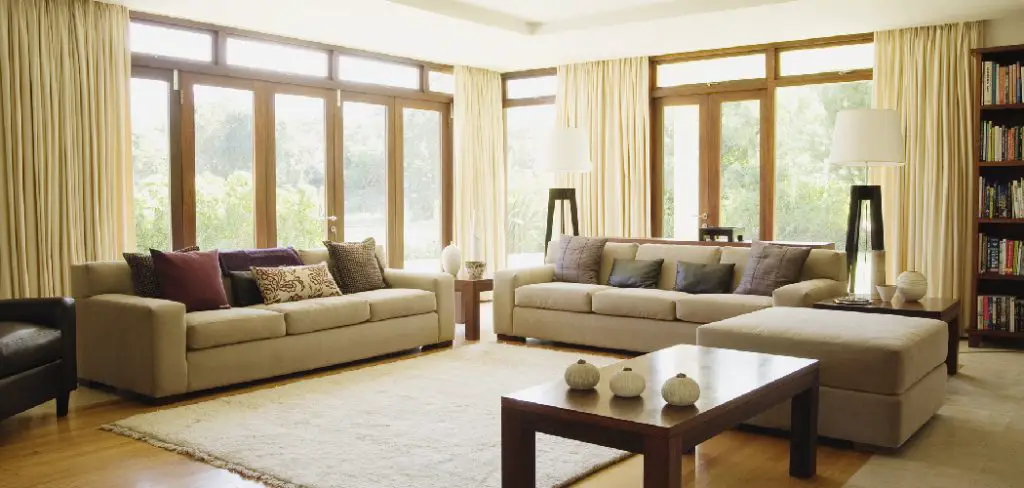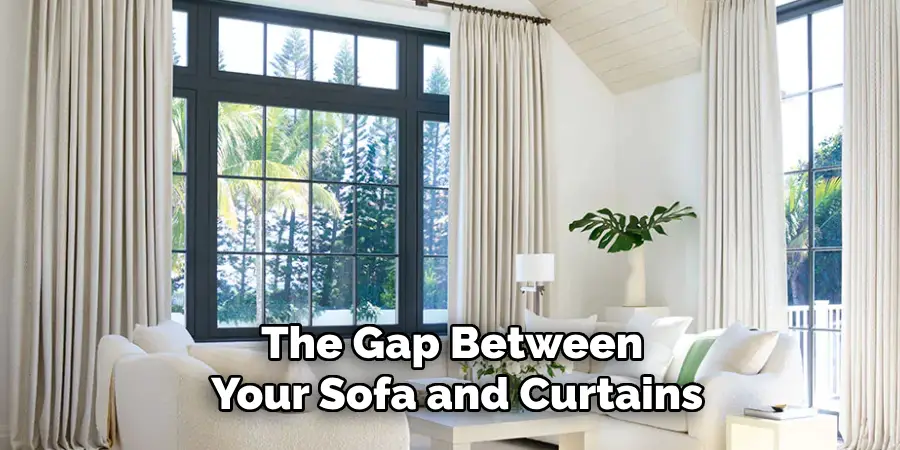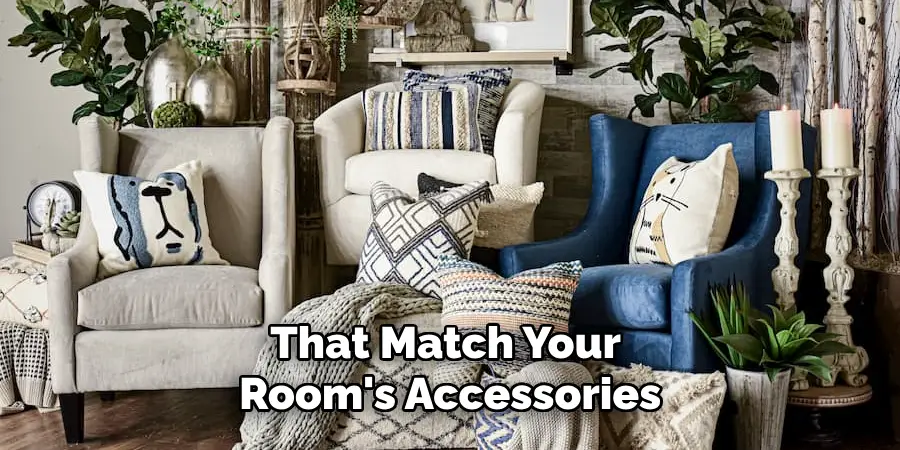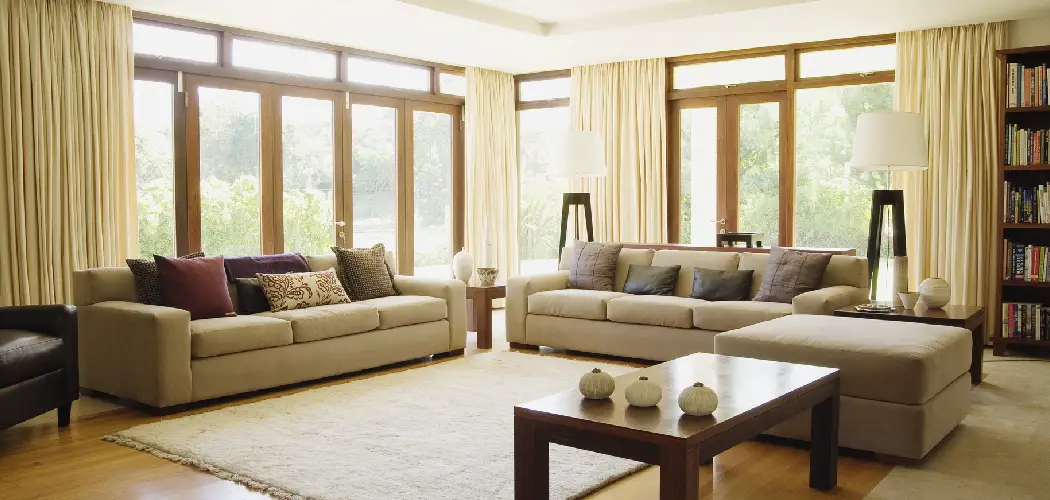Choosing the right curtains to complement your sofa can transform a living space into a cohesive and stylish area. The process involves considering several factors such as color, texture, pattern, and style to ensure harmony between these key elements of your décor. This guide will walk you through how to match curtains with sofa, providing tips and techniques to help simplify the task. By paying attention to these details, you can create a room that feels both inviting and thoughtfully put together.

Whether you’re aiming for a bold, contrasting look or a more subtle, coordinated appearance, understanding how to match your curtains with your sofa is crucial for elevating the aesthetic appeal of your home.
Understand the Role of Curtains and Sofas
Curtains and sofas play pivotal roles in defining the ambiance and functionality of a living space. A sofa is often the centerpiece of a living room, offering both comfort and visual interest. Its style, color, and placement can set the tone for the entire room, making it critical to choose accessories that enhance rather than clash with it. Curtains, on the other hand, are not only functional—providing privacy and controlling light—but they also contribute significantly to the room’s aesthetic.
They can frame windows, add a splash of color or texture, and even make a space appear larger or cozier. By understanding how curtains and sofas interplay, you can effortlessly use them to reinforce the desired mood and style of your living area.
Match or Complement Colors
When it comes to matching or complementing colors between your curtains and sofa, the key is to create a balanced and cohesive look without overwhelming the space. Begin by considering the color palette of your room, including walls, flooring, and other furniture pieces. If your sofa is a bold or vibrant color, choosing neutral or complementary colored curtains can help soften the look while maintaining harmony.
For instance, a navy sofa paired with soft gray curtains can provide a sophisticated and understated look. Conversely, if your sofa is in a more subdued or neutral shade, using curtains in a bold color or pattern can add visual interest and depth. You could opt for a pair of mustard curtains alongside a beige sofa to introduce a pop of color without clashing.
Consider Fabric Texture and Material
The texture and material of both your curtains and sofa are crucial elements that can significantly influence the overall aesthetic and feel of your living room. Selecting compatible textures not only enhances visual appeal but also adds depth to the décor. If your sofa is upholstered in a smooth, sleek fabric like leather or a fine weave, you might consider curtains made from a similarly refined material, such as silk or satin, to maintain an elegant and cohesive look.
On the other hand, a plush, cozy sofa fabric like chenille or velvet works well with heavier curtain materials like linen or brocade, which bring warmth and texture. It’s also essential to consider the functionality of the fabrics; for instance, heavier materials are more effective at blocking light and maintaining privacy, making them suitable for spaces requiring more insulation.

10 Methods How to Match Curtains with Sofa
Decorating your home can feel like putting together a giant puzzle, where every piece needs to fit perfectly. A key part of this puzzle is ensuring that your curtains and sofa harmonize with each other. Not only does this pairing impact the overall aesthetic of your living space, but it also influences the mood and functionality of the room.
1. Choose Complementary Colors
Selecting complementary colors for your curtains and sofa is a timeless way to enhance your room’s visual appeal. Complementary colors are opposite each other on the color wheel, such as blue and orange or red and green. This contrast can create a vibrant and balanced look. To find your perfect combination, consider using online color palette generators, which can offer numerous options based on your sofa’s hue.
2. Stick to a Monochromatic Scheme
If you prefer a more subtle look, a monochromatic color scheme might be your best bet. Choose curtains that are a shade lighter or darker than your sofa to add depth without overwhelming the space. For example, if your sofa is navy blue, opt for curtains in a rich sky blue or deep midnight tone. This method can make your room appear more cohesive and serene.
3. Play with Patterns
Patterns can add character and interest to your living space. If your sofa is a solid color, consider patterned curtains that incorporate the sofa’s color. For instance, a beige sofa can pair beautifully with floral curtains that feature hints of beige. Be cautious not to overdo it—if your sofa is already patterned, it’s best to go for solid-colored curtains to avoid clashing designs.
4. Consider Texture
The texture is just as important as color when matching curtains with your sofa. A velvet sofa pairs well with heavier curtains like brocades or silks, while a linen sofa looks great with lighter materials like cotton or sheer fabrics. Mixing different textures can add depth and interest to the room, creating a dynamic yet harmonious look.

5. Draw Inspiration from Your Room’s Style
Take cues from your room’s overall style when selecting curtains. For a modern aesthetic, go for sleek, minimalistic curtains that echo the lines and shapes found in your furniture. In a more traditional setting, ornate drapes with tassels or pleats can complement a classic sofa design. Aligning your curtains with the room’s existing theme ensures a unified appearance.
6. Use Neutrals Wisely
Neutrals like white, gray, and beige are versatile and can easily tie different elements of a room together. If your sofa is a bold color, neutral curtains can provide a balancing effect, allowing the sofa to stand out without competing for attention. Conversely, if your sofa is neutral, colorful curtains can add a pop of interest.
7. Consider the Room’s Lighting
Natural and artificial lighting can influence how colors and textures appear in a space. Before finalizing your curtain choice, observe how different shades look at various times of the day. You might find that a particular color looks vibrant in natural daylight but dull under evening lighting. Adjust your choices accordingly to maintain the desired atmosphere.
8. Reflect the Season
For those who love to switch things up, consider changing your curtains seasonally. Light, airy fabrics and pastels are perfect for spring and summer, while heavier materials in rich tones suit fall and winter. This approach allows you to refresh your space regularly and keep it aligned with the changing seasons.
9. Add Accessories for Coordination
Accessories like throw pillows, rugs, and artwork can bridge the gap between your sofa and curtains. Select items that incorporate elements from both, creating a cohesive narrative within your decor. For example, a cushion featuring colors from both the sofa and curtains can act as a visual link between the two.
10. Consult a Professional
When in doubt, consulting an interior designer can be invaluable. Professionals have an eye for detail and can offer insights and suggestions you might not have considered. They can work within your budget to recommend fabrics, patterns, and colors that suit your personal style and existing decor.

Alternative Methods and Tips
In addition to the methods already discussed, there are several other creative ways to ensure your curtains and sofa complement each other beautifully.
- Layering Curtains: Consider layering curtains of different opacities to add dimension and versatility to your space. Sheer panels paired with heavier drapes can provide a range of lighting options and add a luxurious feel.
- Mixing Curtain Styles: Don’t shy away from mixing different curtain styles within the same room. For example, Roman shades combined with flowing draperies can offer both functional and aesthetic benefits, providing privacy as well as visual appeal.
- Embrace Drape Length: The length of your curtains can significantly affect the room’s perception. Floor-length drapes create a sense of elegance and height, while sill-length curtains may lend a more casual and approachable vibe.
- Incorporate Tiebacks: Stylish tiebacks can be both a functional and decorative addition to your curtains. Choose tiebacks that match your room’s accessories, such as leather straps for a rustic touch or metallic finishes for a modern edge.
- Focus on Curtain Hardware: The rods, rings, and hooks that support your curtains can also contribute to your room’s overall aesthetic. Choose hardware that echoes other elements in the room, like furniture legs or light fixtures.
- DIY Accents: Add a personal touch by incorporating DIY projects such as hand-sewn trims or painted patterns on plain curtains. This customization can create unique pieces that uniquely reflect your style.

Conclusion
Creating a harmonious living space involves thoughtful coordination between various elements, with curtains and sofas playing a significant role. By considering factors such as color, pattern, texture, and room lighting, you can ensure that your selections complement each other beautifully. Follow these simple instructions outlined in this blog post about how to match curtains with sofa, and you’ll be able to get the job done with ease.

